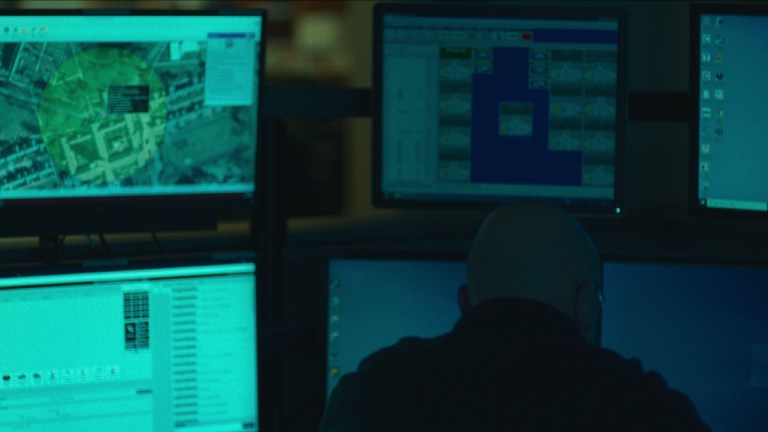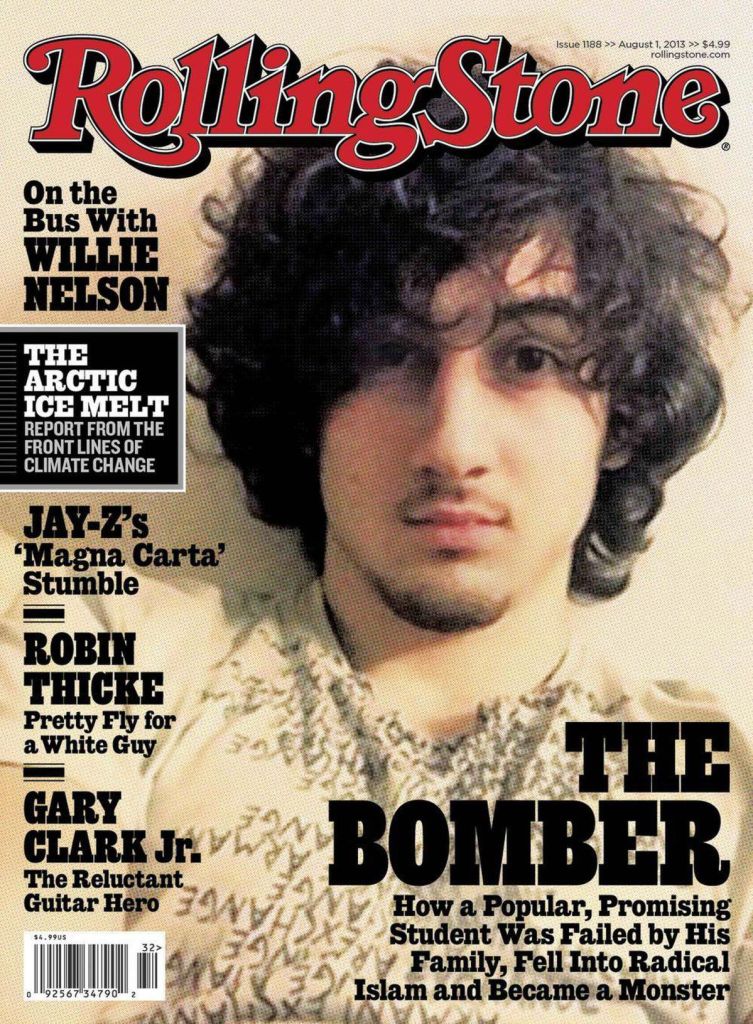American Manhunt: What Netflix’s Boston Marathon Bombing Doc Leaves Out
Netflix's American Manhunt: The Boston Marathon Bomber captures (almost) the entirety of a historic event.

On April 15, 2013, two homemade pressure cooker bombs detonated near the finish line of the Boston Marathon route, killing three people and injuring hundreds of others. The brazen act of terrorism would lead to an intense four-day manhunt throughout eastern Massachusetts that would ultimately lead to the capture of one of the perpetrators and the death of the other.
The story of the Boston Marathon Bombing, as it would come to be known, is characterized by both the gritty resilience of the city that endured it and the unprecedented tactics that law enforcement would undertake to bring those involved to justice. With its new three-episode docuseries American Manhunt: The Boston Marathon Bombing, Netflix has now attempted to bring the definitive version of this historic event to its stream.
As its name suggests, American Manhunt is particularly focused on the frenzied effort to identify the bombers and then track them down. While the docuseries, directed by Floyd Russ, does well to capture the fear and anguish of the bombing’s victims, it understandably wants to center on the backgrounds of murderous brothers Tamerlan and Dzhokhar Tsarnaev, and the intense 100-hour period after their act of terror.
American Manhunt: The Boston Marathon Bombing is largely successful in capturing the full picture of this momentous event in history. It is, however, still bound by Netflix’s seemingly ironclad three hour-long episode format for its documentaries of late (see also: Waco: American Apocalypse, MH370: The Plane That Disappeared, and many other recent examples). As such, there are some important aspects of the Boston Marathon Bombing story that appear to have been left on the cutting room floor.
If you’d like to know three crucial points that Netflix leaves out, read on now.
Reddit Led a Regrettable Social Media Witch Hunt
Following the Boston Marathon bombing, the FBI faced a major problem in their investigation. Thanks to the prevalence of cell phone cameras (Apple was in its sixth generation of iPhones in 2013) and surveillance/CCTV recorders around the finish line, federal authorities had a wide breadth of footage to investigate, but not enough personnel to comb through it all in a timely fashion. This led to a controversial decision. For one of the first times in the mass information era, the FBI would effectively crowdsource a major investigation by releasing footage of the white hat and black hat-wearing suspects and request the public’s help in identifying them.
American Manhunt: The Boston Marathon Bombing unpacks the consequences of this decision quite effectively. The first episode of the docuseries details how the public’s involvement led to a mob mentality that dredged up some ugly 9/11 era anti-Islamic sentiment. Curiously, however, the doc leaves out the most notable tragedy that arose from the internet’s sincere yet destructive desire to help: the misidentification of Sunil Tripathi as the Boston Marathon bomber.
Following the FBI’s release of its suspect photos, several online forums joined the effort to identify the men who would eventually be revealed to to be Dzhokhar and Tamerlan Tsaranaev. Users on Reddit in particular uncovered a Twitter post from a former classmate of Sunil Tripathi’s that claimed the Boston bomber resembled the Brown University undergraduate. Over the span of several threads on several subreddits, impassioned Reddit investigators looked further in to the curious case of Tripathi.
Due to Tripathi’s vaguely Middle East-sounding name (though his parents were from India and they were not Muslim) and his mysterious disappearance one month earlier, many social media users became convinced that he was one of the suspects that the FBI was seeking. Reddit’s mistake quickly carried over into traditional media with two Buzzfeed reporters and a popular Twitter account associated with the hacking collective Anonymous boosting the misinformation.
Of course, Sunil Tripathi was not either Boston bomber. It turns out that the severely depressed 22 year old had committed suicide shortly after he first went missing on March 16. Before Tripathi’s body was discovered on April 23, his family had to endure more than a week of cruel commentary online and probing questions from journalists about their missing son. Tripathi’s sister Judith told The New York Times that the family received “hundreds of threatening and anti-Islamic messages (though they are not Muslim)” and added that “All the sentiment and help we had received to help find Sunil switched over and said he was a terrorist.”
The unfortunate Reddit witch hunt became a major aspect of the Boston Marathon bombing story and a cautionary tale for future generations of amateur internet detective. So much so that it’s a little strange that American Manhunt would leave it all out.
Details of the First Shootout Are Murky
The majority of American Manhunt‘s second episode, “The American Dream,” covers what happened after the Tsarnaevs were identified as suspects. After the brothers’ hostage Dun “Danny” Meng escaped and called 911, police tracked their stolen car to the suburban Laurel Street in Watertown, Massachusetts where officers exchanged gunfire with Dzhokhar and Tamerlan, firing somewhere between 200 to 300 rounds of ammunition. The brothers responded with 56 rounds of their own, one successfully detonated pressure cooker bomb, three successful improvised grenades, and two duds.
If a major gunfight among a half-dozen people on a narrow suburban street in the dead of night sounds confusing and chaotic, that’s because it is – particularly with everyone involved having not had a chance to sleep since before the bombing three days earlier. As a result, some of the details of this firefight are murkier than American Manhunt would lead you to believe.
It is largely accepted that, in a fit of panic, Dzhokhar ran over his own brother in the stolen SUV. There are a handful of other reports, however, that claim the police ran over Tamerlan. Additionally, at least one emergency physician who treated Tamerlan at the emergency room reported that the elder Tsarnaev didn’t appear to have been run over at all.
It’s most likely that Dzhokhar accidentally ran over his brother in all the chaos of the gunfight. And ultimately it doesn’t matter much who did anyway since A. Tamerlan was a terrorist engaged in a gun battle against police and B. It seems possible he would have died of his gunshot wounds anyway. But American Manhunt still doesn’t do its audience any favors by presenting certainty where there isn’t any.
Additionally, American Manhunt causes further confusion by presenting artificial surveillance footage of what appears to be Tamerlan Tsarnaev being run over by a vehicle. To the documentary’s credit, it does forewarn at the top of the episode that not all footage presented in the hour is real and authentic and some has been added for dramatization purposes. That’s all well and good but it’s easy for the average viewer to forget that Ring surveillance cameras were in their infancy in 2013 and there is no meaningful video from the shootout (though at least one neighbor got some incredible photos on his ancient iPhone).
Dramatizing events in a real life case for a documentary audience is nothing new, nor is there anything inherently sinister about it. I just wish that, in its mission to create the most definitive and accurate version of the Boston Marathon bombing and subsequent manhunt possible, American Manhunt opted for something less flashy and misleading instead.
The Controversial Rolling Stone Cover
American Manhunt ends its narrative shortly after Dzhokhar Tsarnaev is taken into custody before fading into the traditional “here’s what happened next to everyone involved” documentary text. One thing that’s left out from this time frame is a controversial magazine cover that led to some interesting conversations and reflections upon how media should cover mass murderers and terrorists.
In the August 2013 issue of Rolling Stone, the magazine’s cover story was about Dzhokhar Tsarnaev, his upbringing, and how he was influenced by his brother into religious extremism and violence. The story itself was well received but many took issue to Tsarnaev’s appearance on the cover. Critics contended that the photograph, taken by Tsarnaev himself, cast the mass murderer in too sympathetic a light and that he resembled a movie star more than a criminal. Take a look below to see if you agree.

Some retailers like CVS and BJ’s Wholesale Club announced that they would not carry the issue, which did little to stop it from becoming one of the best selling single issues of a magazine that year. Rolling Stone‘s editorial team released a note defending the cover story saying that it “falls within the traditions of journalism and Rolling Stone‘s long-standing commitment to serious and thoughtful coverage of the most important political and cultural issues of our day.”
That statement, however, doesn’t fully contend with the issue most people had with it: the image. It might not be as apparent 10 years later, but magazine covers used to be synonymous with fame and popularity. The cover of Rolling Stone in particular was reserved only for the biggest stars pop culture has to offer. At the same time though, Rolling Stone also provided (and still provides) the occasional bit of high quality hard news journalism. Combining the typically “boring” and staid hard news feature with the perceived honor of a magazine cover was understandably hard for the average news consumer to reconcile.
Figuring out how to grab people’s attention about stories involving violent crime while still remaining objective and non-exploitative is a challenge that all media grapples with to this day. Thankfully, save for the occasional dramatized hiccup, American Manhunt: The Boston Marathon Bombing grapples with it quite well.
All three episodes of American Manhunt: The Boston Marathon Bombing are available to stream on Netflix now.
